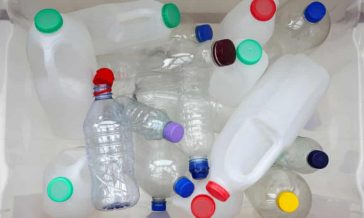
New insights have been revealed on the ubiquity of PFAS use in plastic containers, and the likelihood that these forever chemicals are leaching into food, drinks, personal care products, pharmaceuticals, cleaning products and other items at potentially high levels. It’s unclear how many containers are contaminated, due to little testing and tracking, but one U.S. plastic company reported “fluorinating” – basically adding PFAS to – 300 million containers in 2011.
Plastic companies treat containers with these chemicals to create an effective barrier that prevents flavorings or fragrances from permeating out of the container as well as preventing oxygen or moisture from permeating in. PFAS are also used as a lubricant during the manufacturing process to prevent containers from sticking to machinery and one another,
The EPA is working with chemical companies and the packaging industry to understand how widely fluorinated packaging is used. Meanwhile, the FDA has banned several subclasses of PFAS from use in food packaging, but thousands more similar PFAS can still be used. The agency said it was also following the EPA’s study and will work with companies to remove chemicals that could be contaminating food products.
Multiple safe and effective PFAS alternatives exist and are often used in Europe. “The packaging industry is glacially slow to change, so the EPA or the FDA has to say ‘No, you can’t do this’ and give them some transition period to get the PFAS out,” said an anonymous plastic industry consultant.

